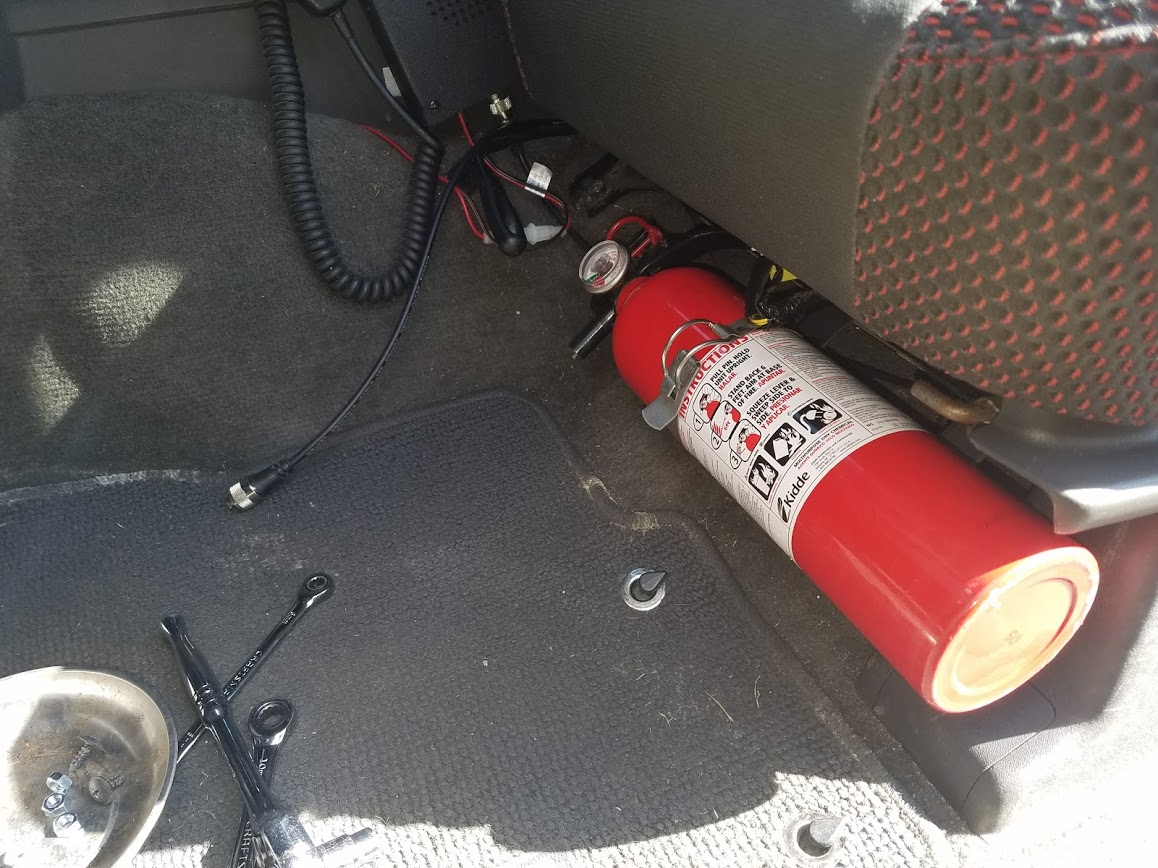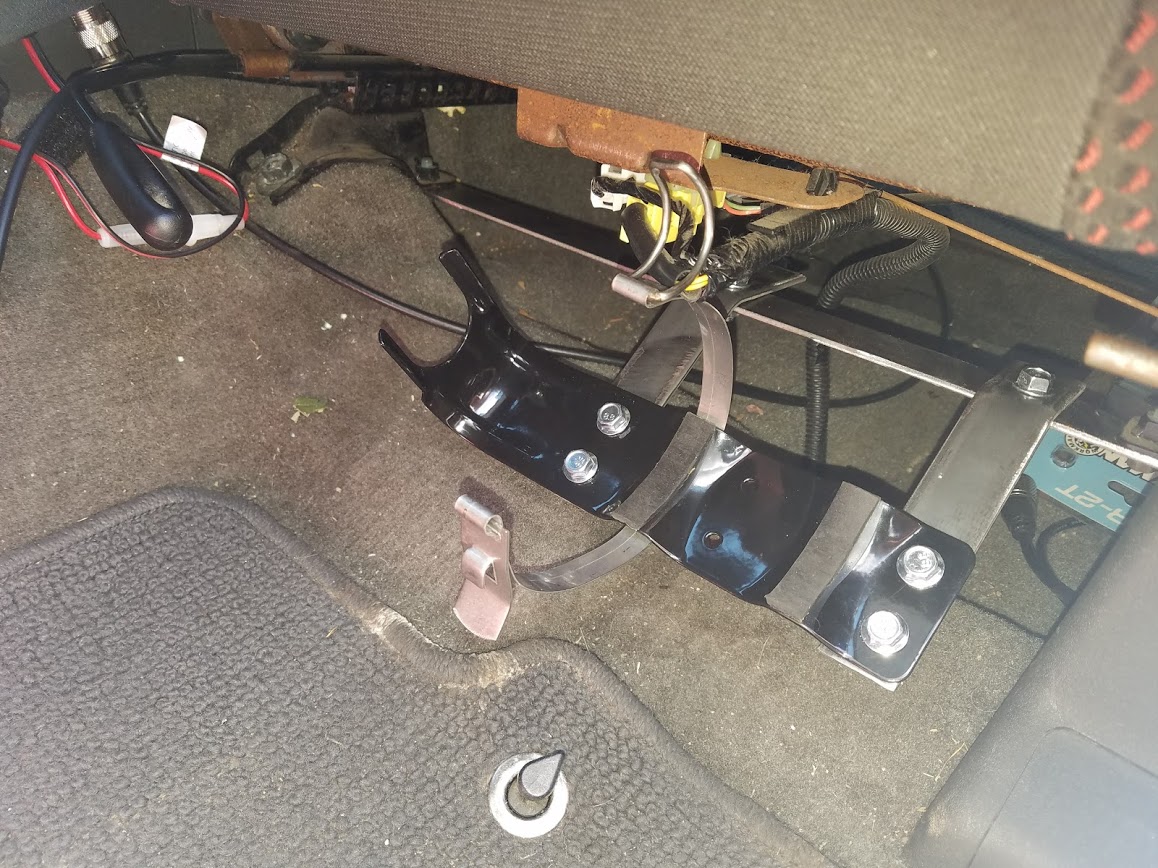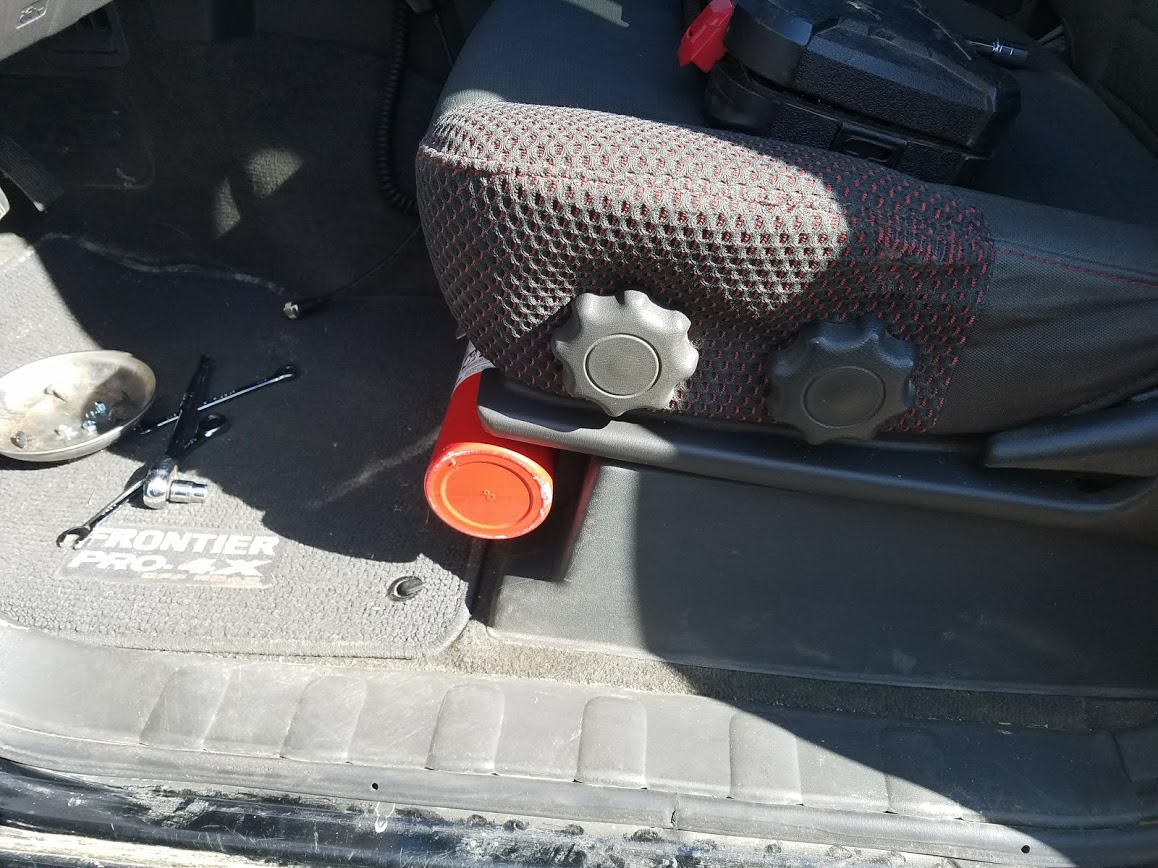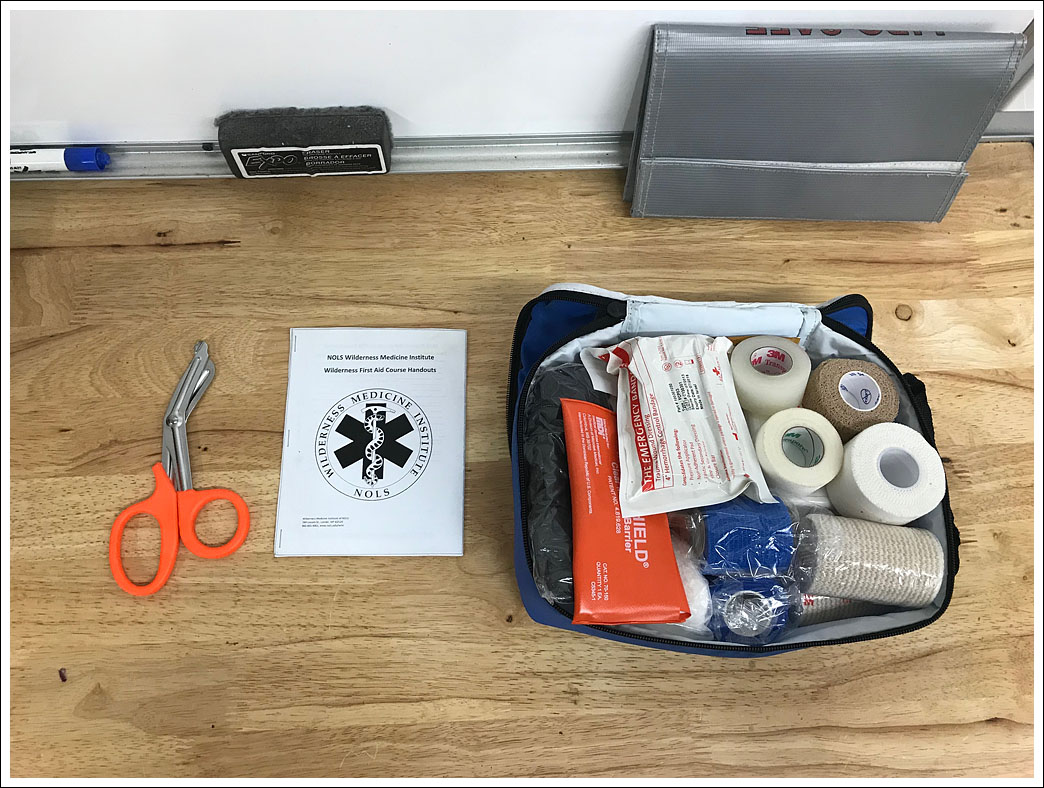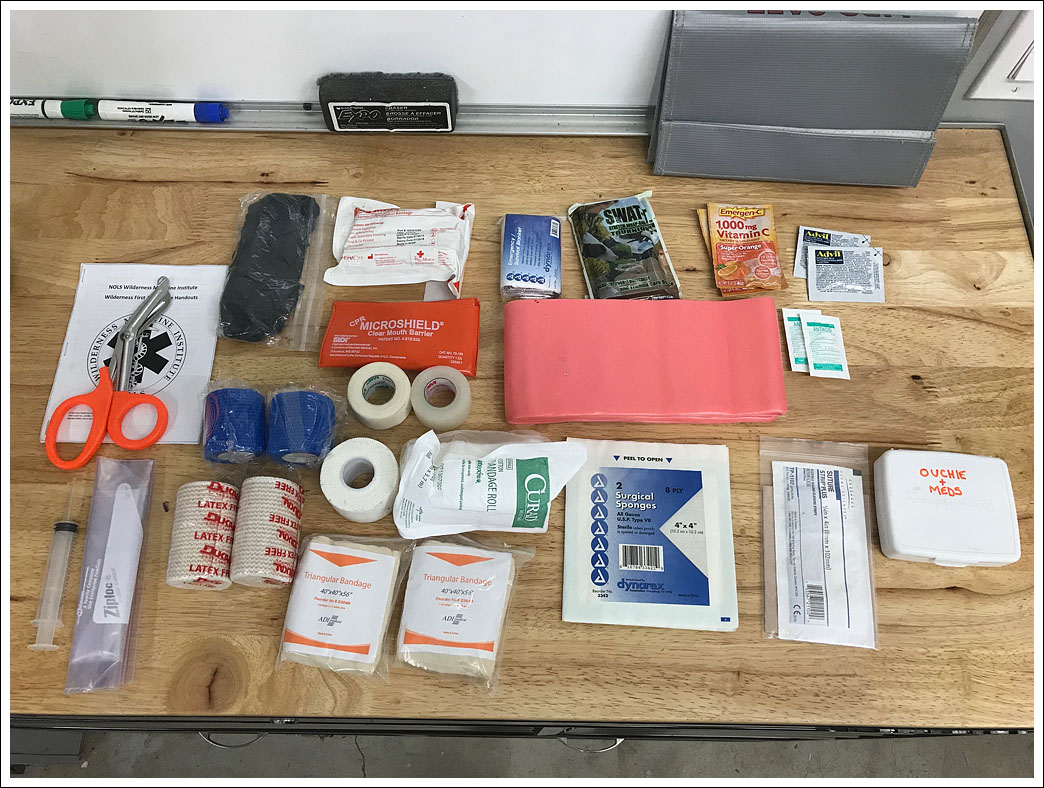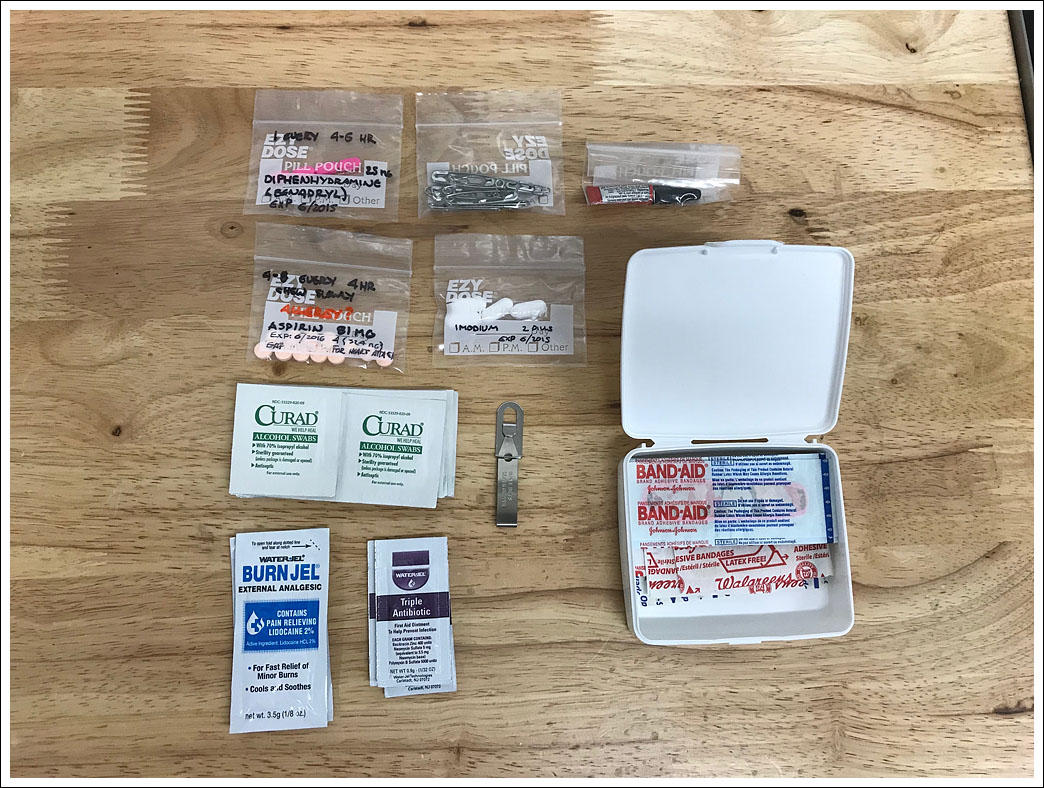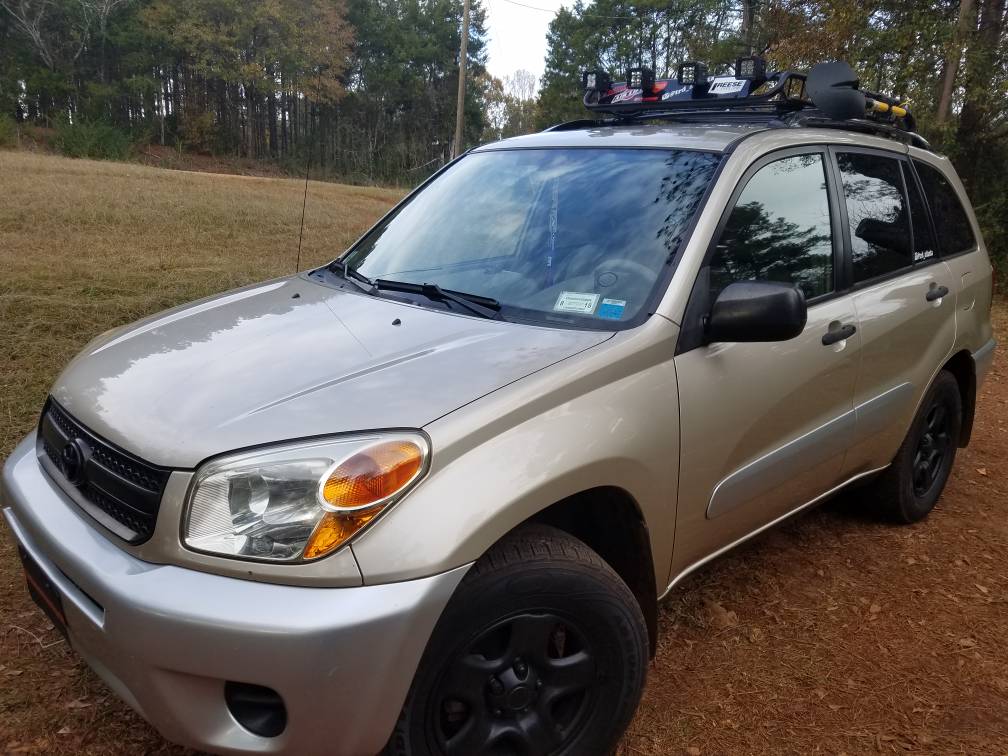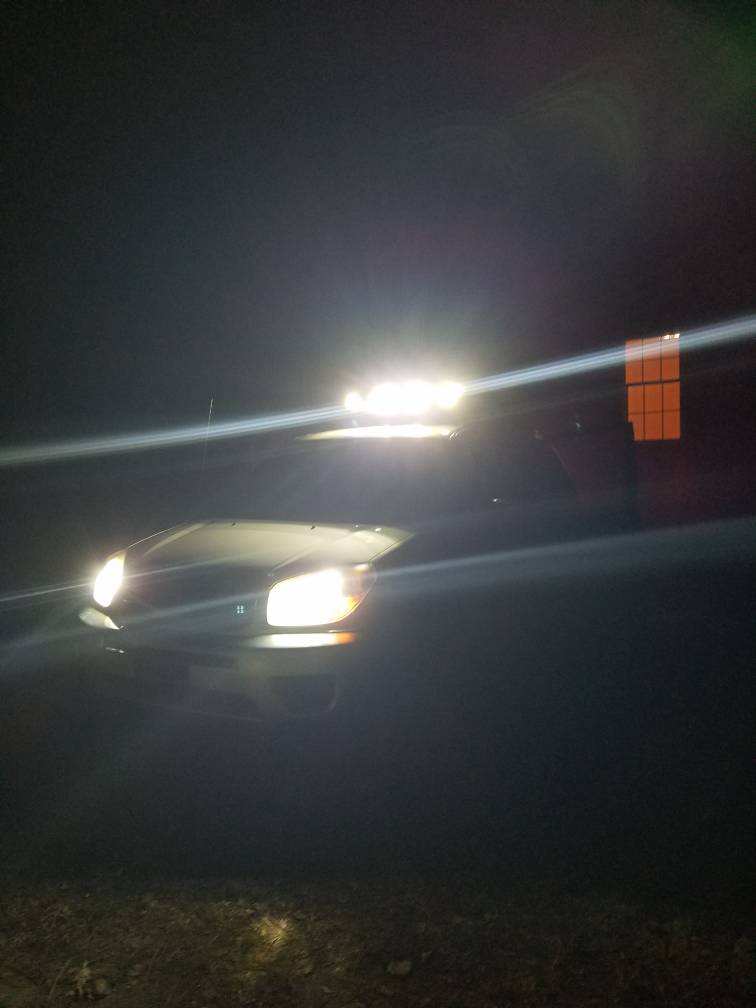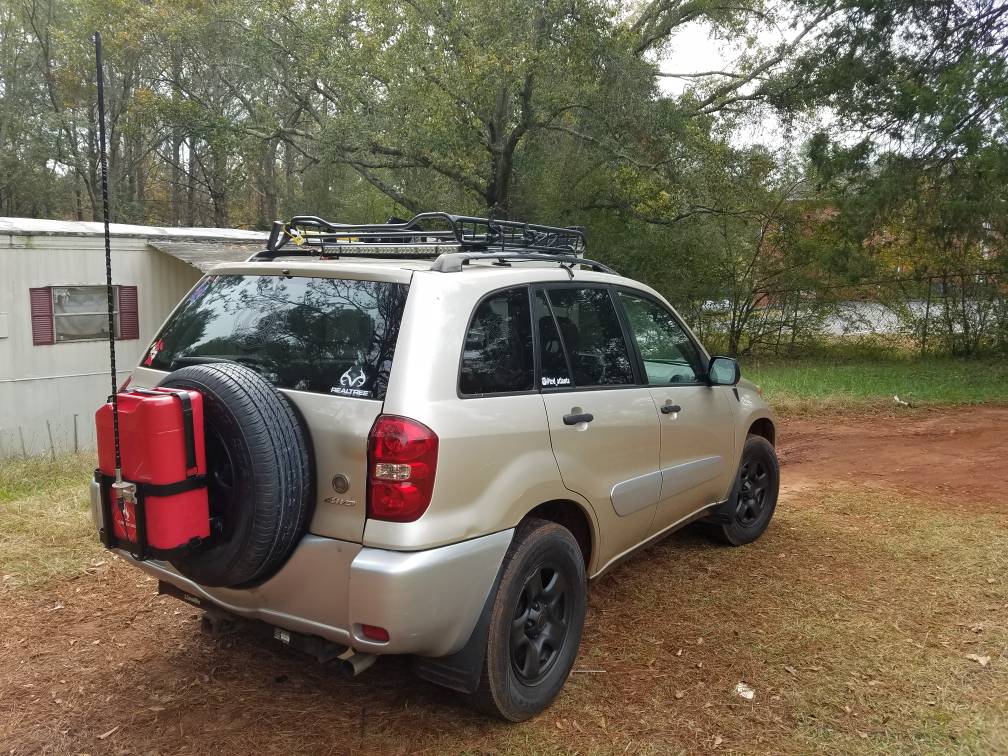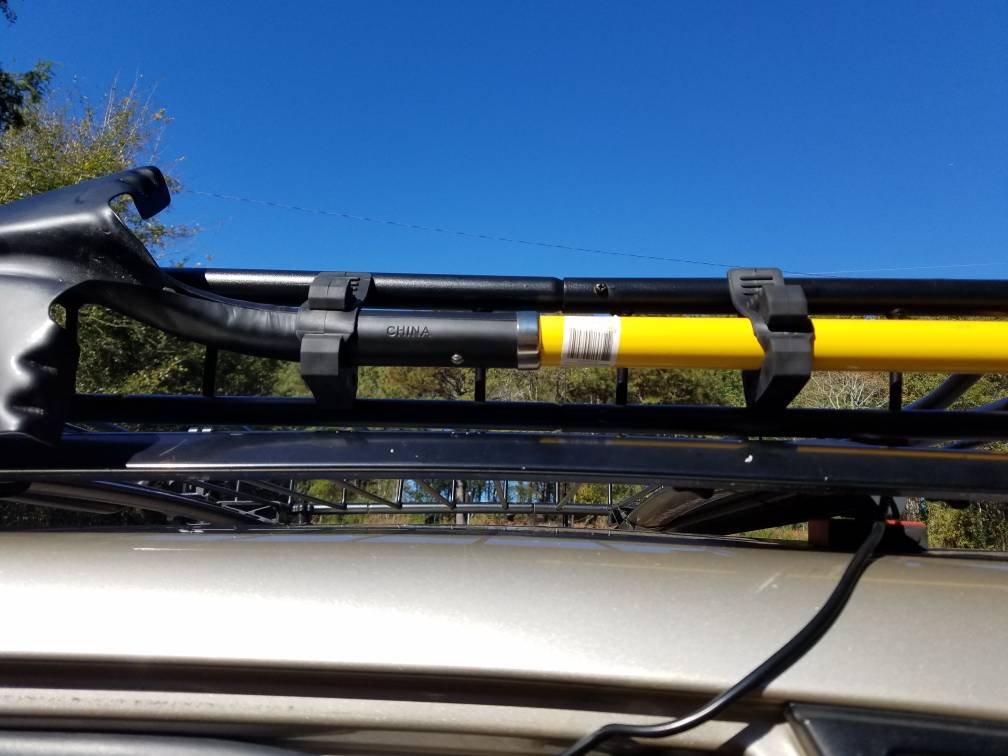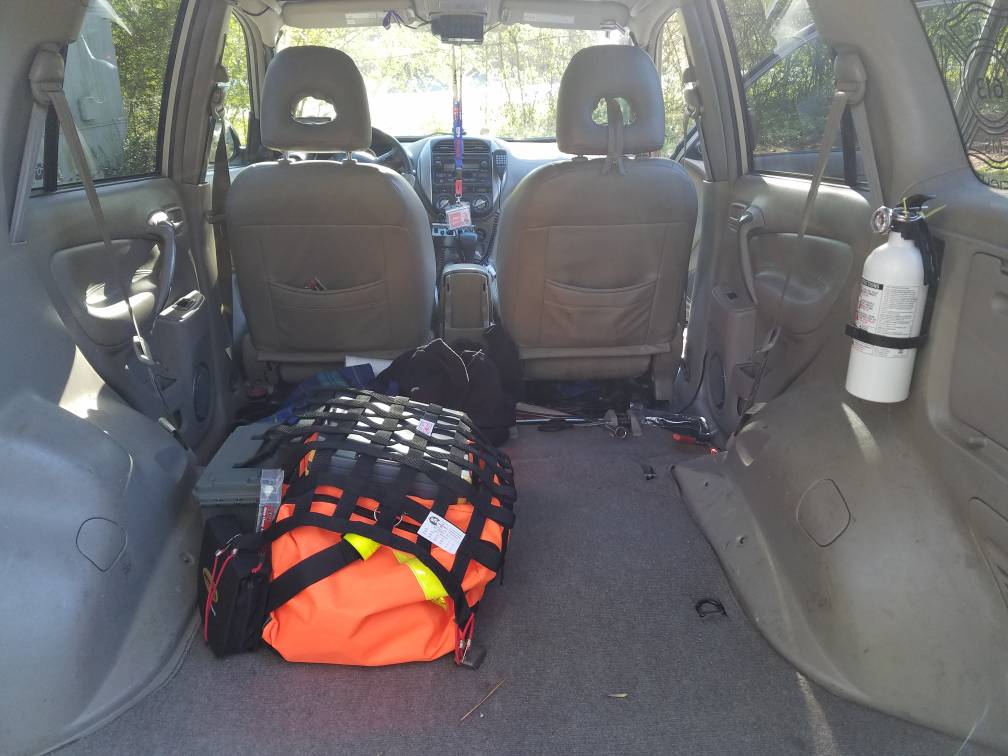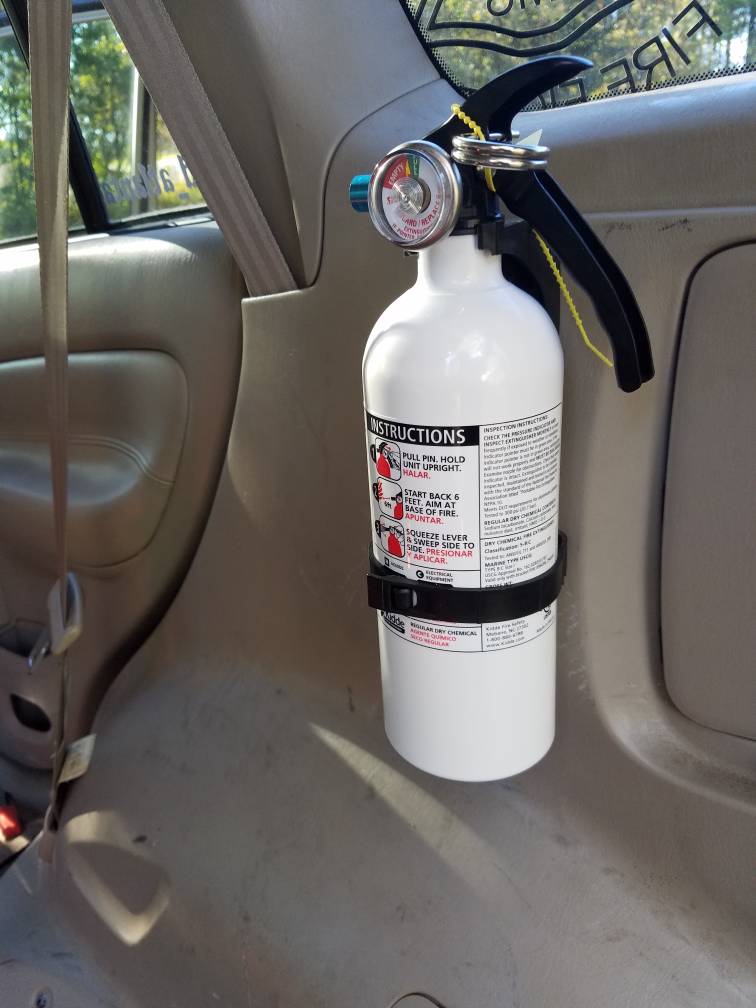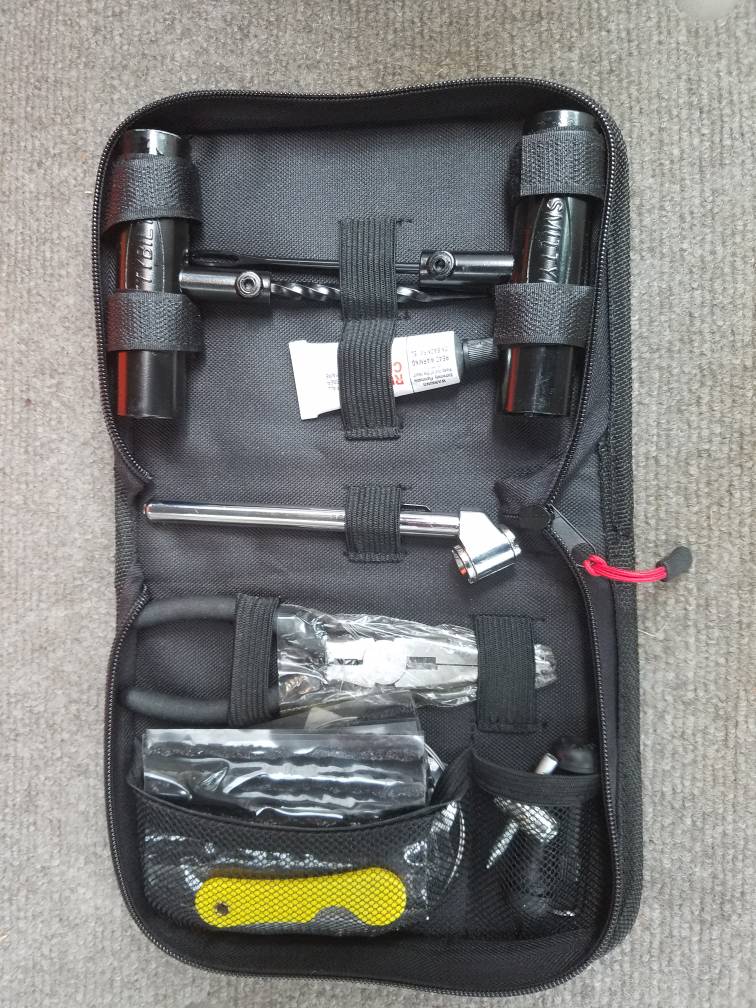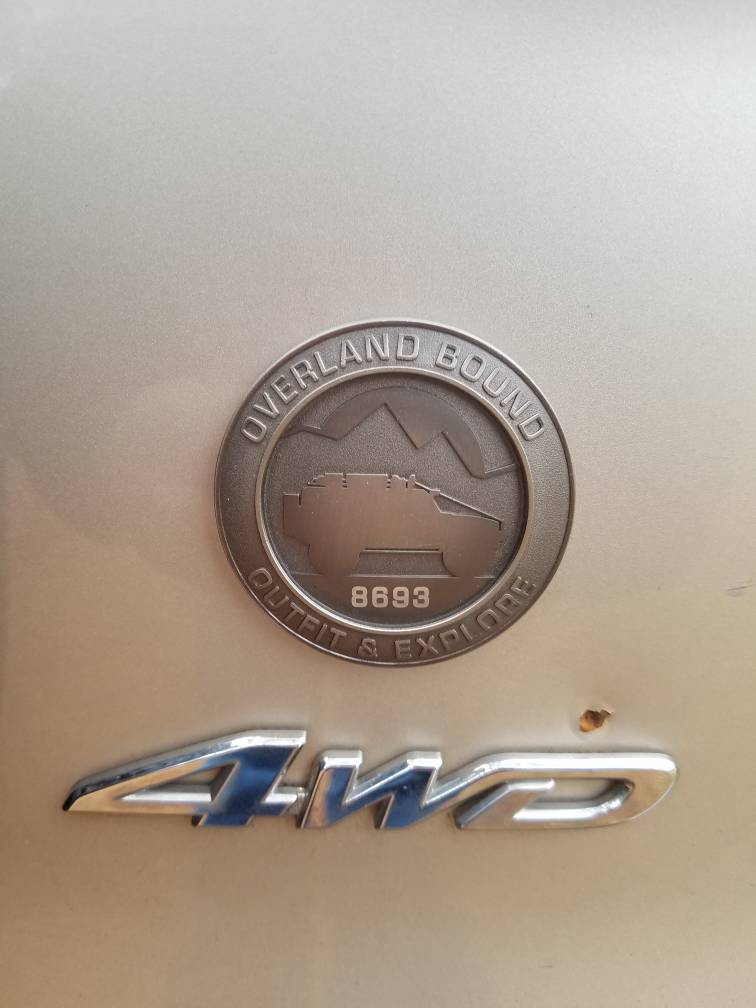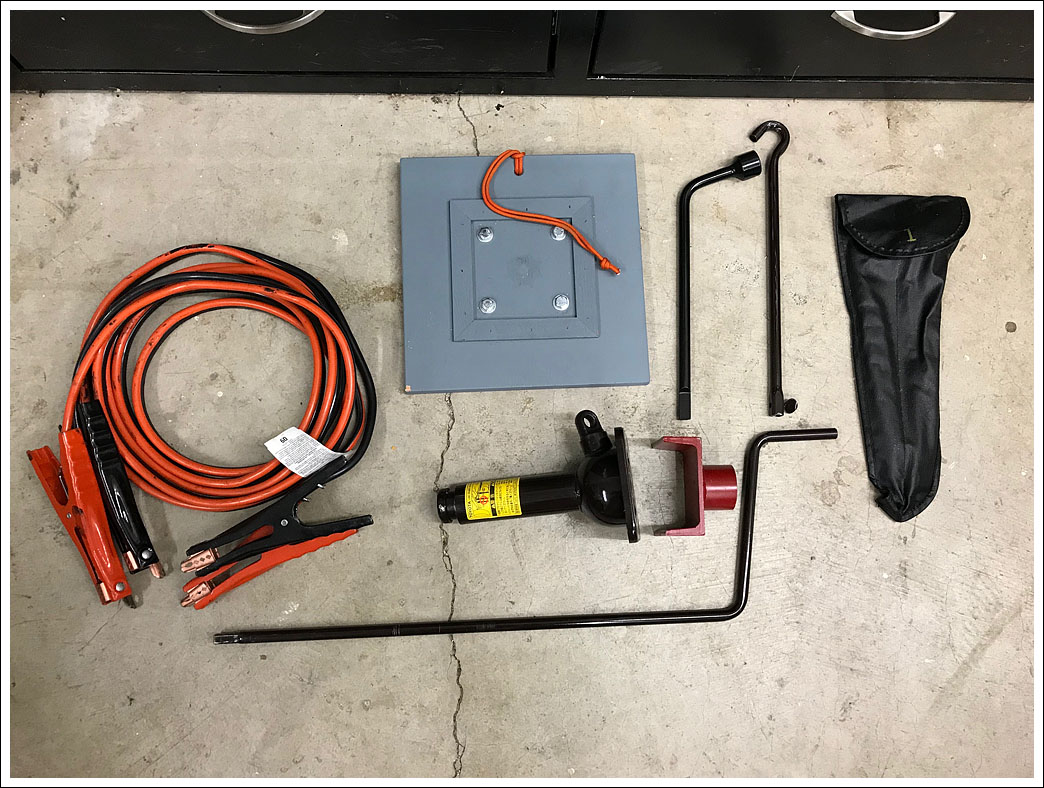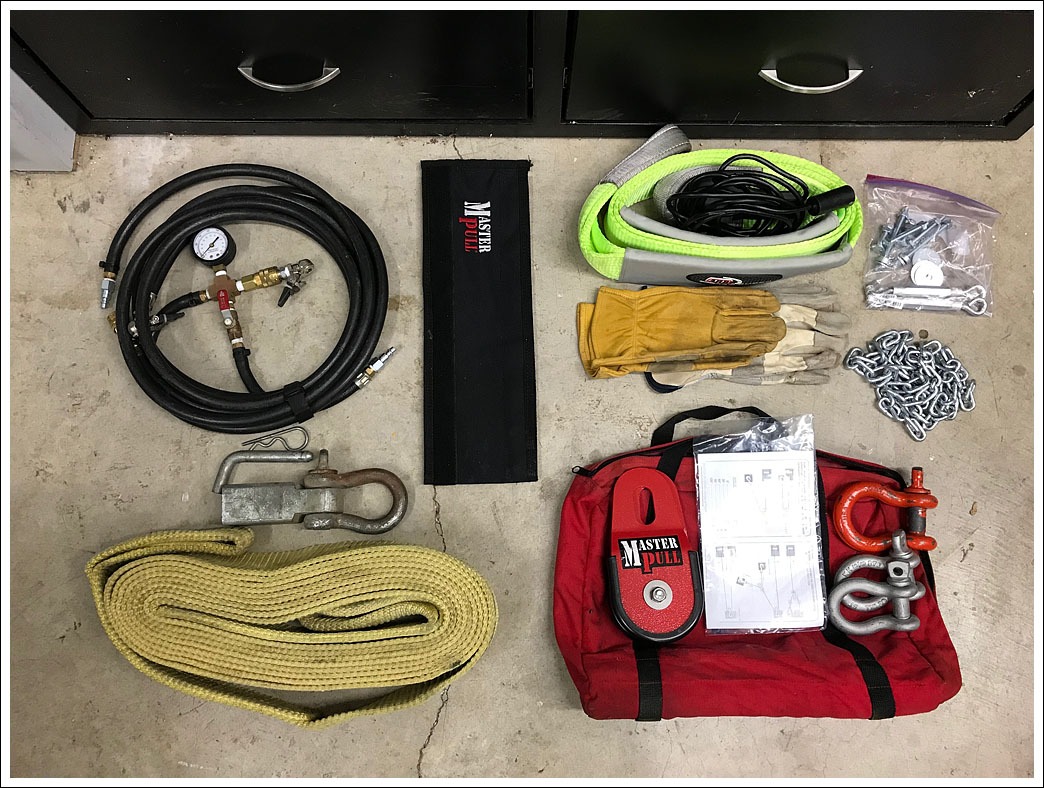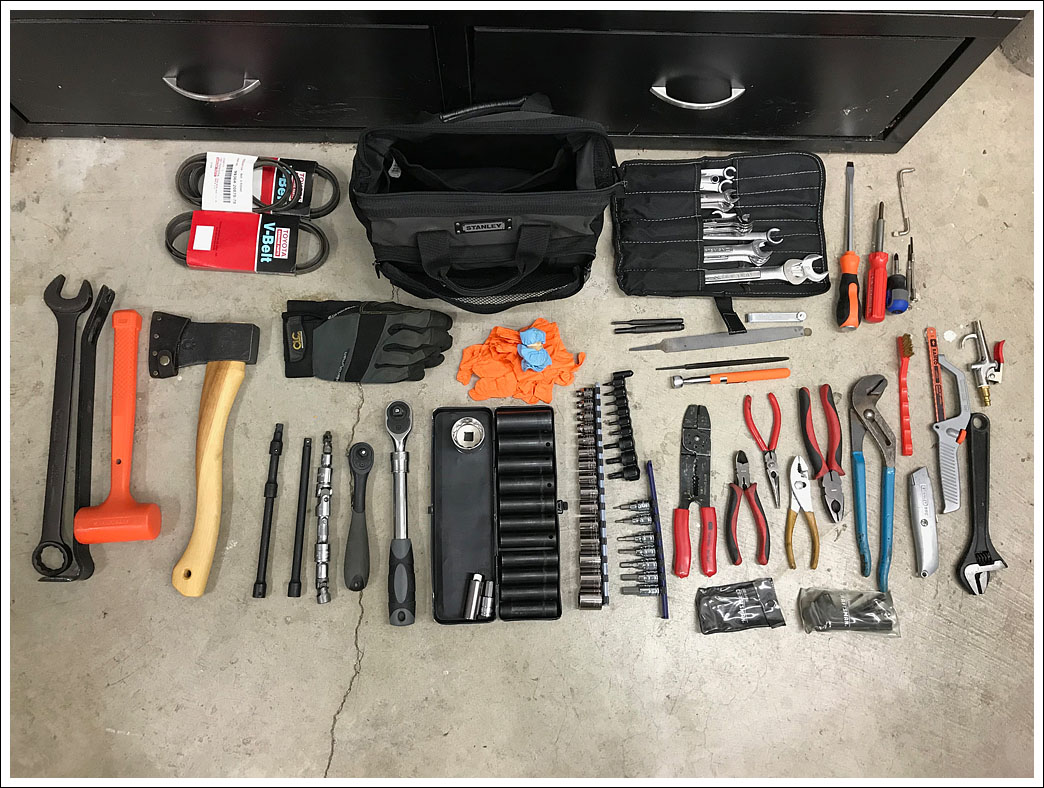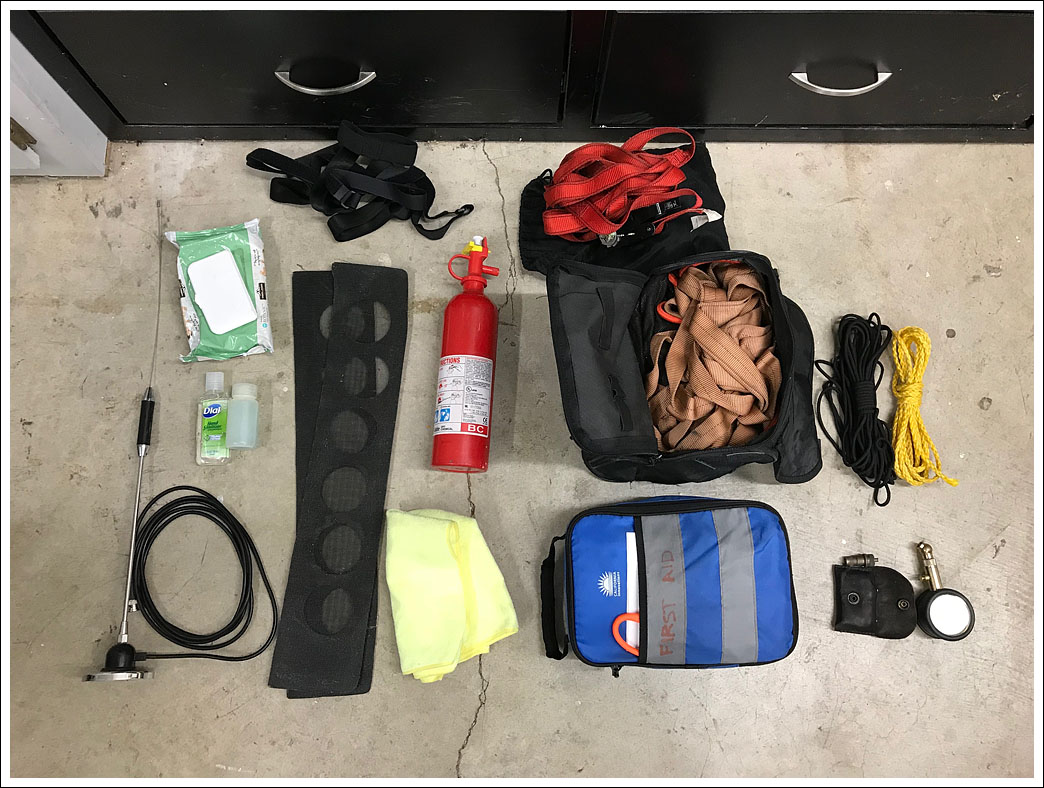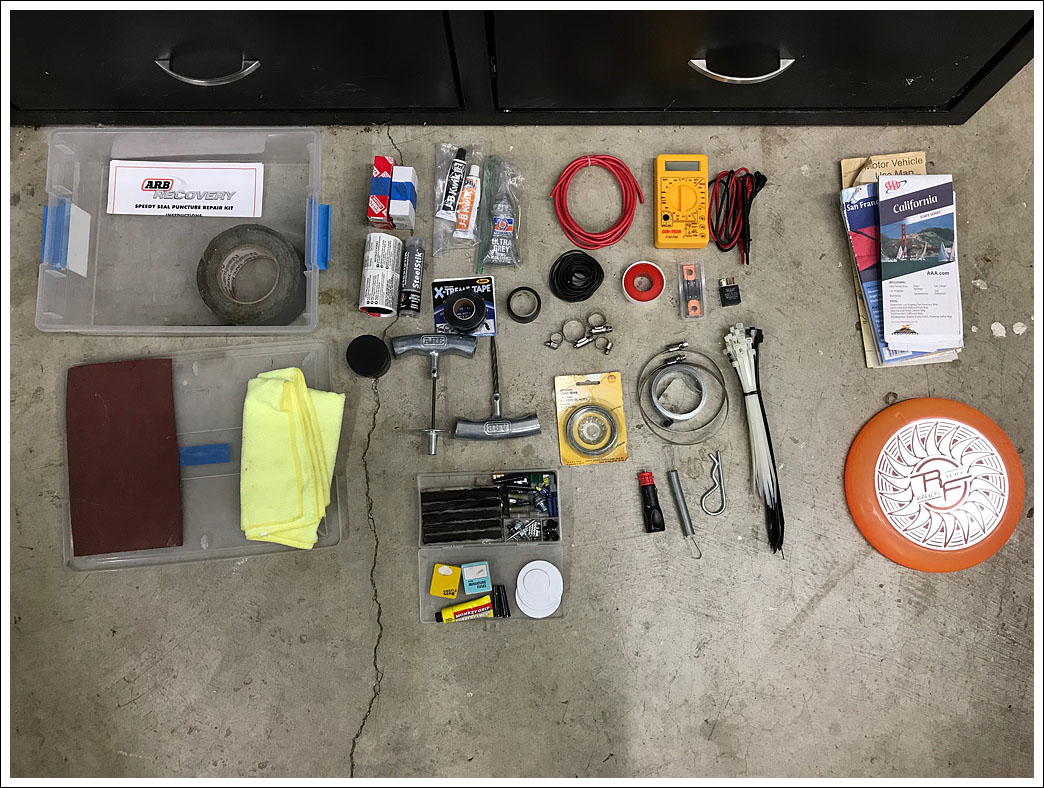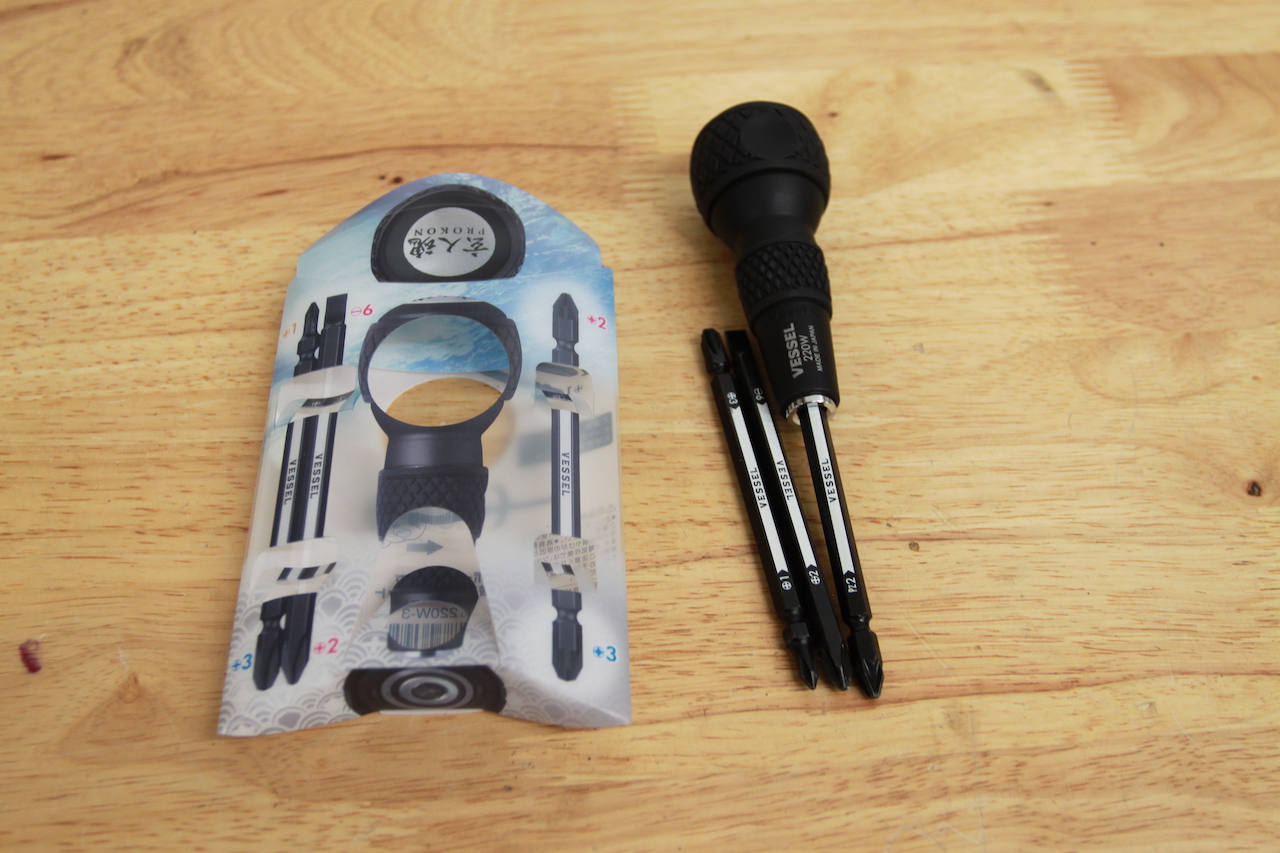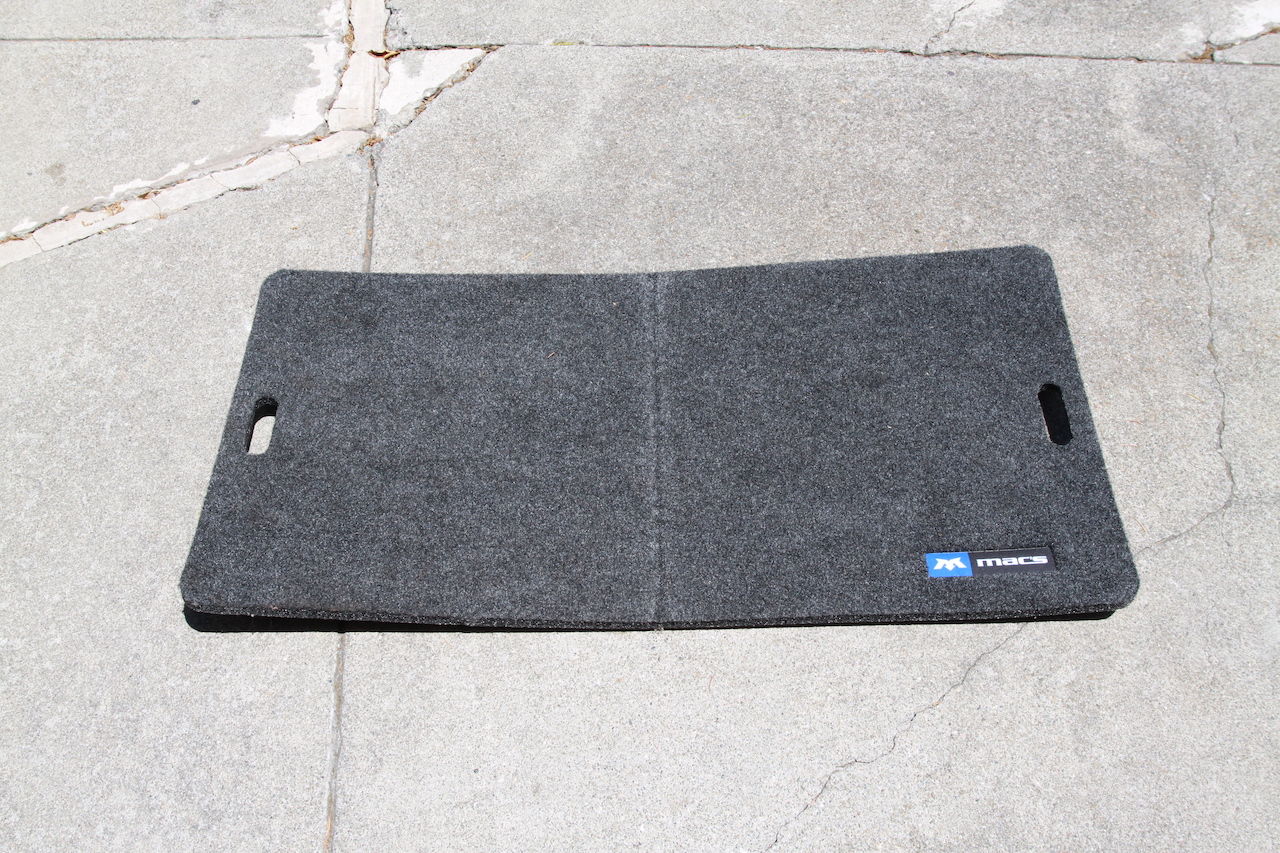Specific items
I own a high lift jack but never carry it (there's a good thread on this site discussing the pros and cons). Instead I carry the factory bottle jack with a saddle adapter and a base plate. The base plate is 3/4" plywood, which can support a surprisingly large amount of weight. This helps keep things stable on soft or uneven ground.
I have a Warn M8000 with synthetic rope on the front of the truck. My other recovery gear includes:
- Rash guard for the rope.
- Rear shackle mount.
- Dynamic recovery strap.
- Static tree strap which doubles as a winch extension.
- Remote control for the winch.
- Lightweight snatch block.
- Multiple shackles.
- Winch load calculation diagrams.
- Leather gloves (preferable to synthetic since they won't melt if used around a camp fire). I carry multiple pairs in case they get wet or someone needs to borrow a pair.
- Chain, turnbuckles, bolts for makeshift repairs (not used for recovery). These are lightweight and great for things like holding an axle in place.
- Air "cross" for airing up the tires.
All of the recovery gear has a MBS (minimum breaking strength) of at least 2x the max pull of the winch in a double-pull setup, with the winch line being the "fuse". I suggest reading about WLL (working load limit) vs MBS when selecting recovery gear.
The tools are primarily focused on my 4Runner, with a few more general items thrown in. When working on the truck at home I try to pay attention to what I use and make sure I carry a similar item in the truck. Many of the tools were bought used or at Harbor Freight to keep the cost down so that it's not the end of the world if they get stolen.
- Spare set of used belts.
- Metric combination wrenches and flare wrenches.
- Various screw drivers, including a large flat head striking cap driver that doubles as a chisel.
- Large combination wrench that fits on my adjustable track bar and also can be used as a cheater on smaller wrenches.
- Prybar.
- Soft hammer and a hatchet which doubles as a hammer.
- Gloves for working on the truck.
- Punches.
- Feeler gauge.
- Files (good for fixing messed up threads).
- Magnetic recovery tool, because I like to drop bolts.
- 3/8" extensions, wobble adapters, and adapters to 1/4" and 1/2". I'm hoping the 3/8" extensions will hold up if I ever use them with the 1/2" ratchet.
- 3/8" ratchet and 1/2" extending ratchet which doubles as a breaker bar.
- Both 3/8" and 1/2" metric sockets including "in between" sizes like 13mm which correspond to standard sizes like 1/2".
- Specialty sockets for the front hubs, spark plugs, and a 10mm hex for the drain plugs.
- Hex sockets, and torx bits for when Jeeps need help.
- Various pliers. I'm probably going to remove the linesman pliers since they are redundant.
- Wire brush for cleaning threads and removing old teflon tape.
- Hacksaw.
- Box cutter.
- Air gun.
- Crescent wrench, useful when I need two of a specific size wrench.
- Metric and imperial hex wrenches.
I probably should carry a set of locking pliers as well to help with rounded or stripped bolts.
And some miscellaneous gear:
- CB antenna.
- Wet wipes, soap, towel, and hand sanitizer.
- Various ropes, ratchet straps, and bungee cords.
- Window screens for sleeping in the truck.
- Fire extinguisher (need to see if this is on the recall list).
- First aid kit (I might do another thread on the contents).
- Staun deflators and an air pressure gauge.
And finally the contents of the box under the seat. These are all small items focused on making repairs to get the truck off the trail.
- Duct tape.
- Sand paper (all kinds of uses such as cleaning electrical contacts).
- Microfiber towel (prevents the items from rattling, and towels are always useful).
- Spare headlamp and spot light bulbs.
- RTV and Two types of quick setting epoxy.
- X-treme tape, electrical tape, and teflon tape.
- Small and large gauge wire.
- Multimeter.
- Spare fuses for the factory items and the winch, relays, and crimp terminals.
- Hose clamps, bailing wire, strapping, zip ties, etc.. for holding things on that are trying to fall off.
- ARB tire repair kit. The orange box this comes in takes a huge amount of room, I ditched it and saved a lot of space.
- Vinyl repair kit for camping gear.
I also carry a collection of paper maps, and an overland-rated Frisbee that is useful when people are moving slowly on the trail.
I think that is pretty much it, other than an ice scraper and flashlight which didn't make it into the pictures.
When offroading it is really easy to carry everything, literally including the kitchen sink. This post intentionally doesn't include camping gear (which is really a different discussion) and instead focuses on what I feel are high value everyday carry items. It also doesn't include emergency items such as water, food, and spare clothes since those are brought on an as-needed basis.
I hope that others find this post useful, and I'm interested in any feedback you may have.
- Matt
